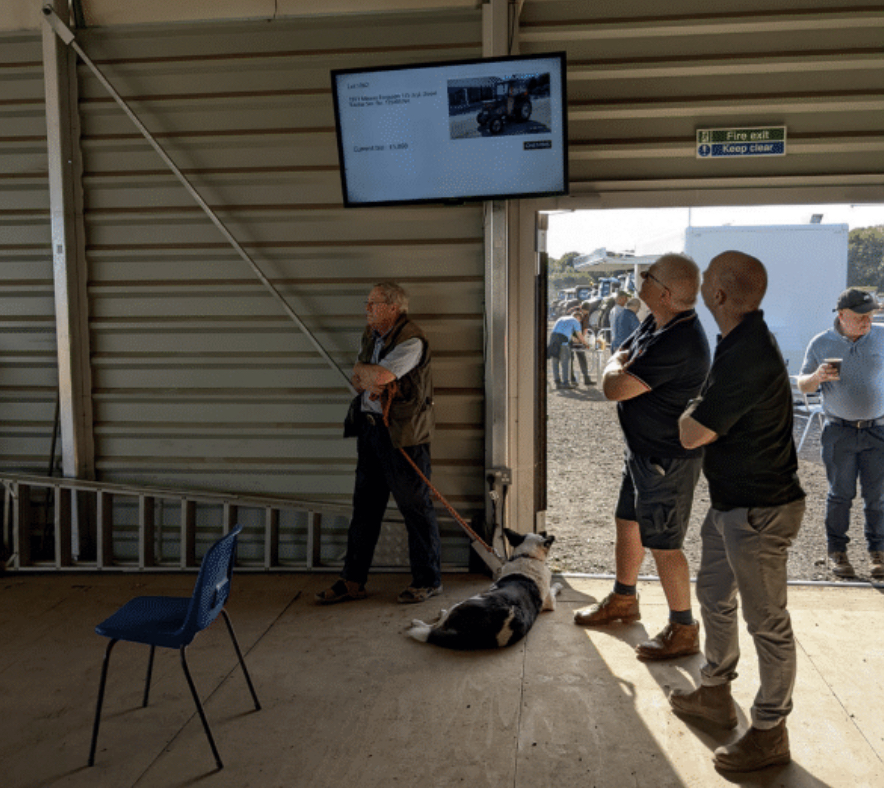Mick Knight explains what to expect when you start bidding at a machinery auction…
When thinking about the realities of buying from a machinery auction, the phrase ‘let the buyer beware’ springs to mind, so the more practical knowledge you have, coupled with taking time to thoroughly look over a prospective purchase, the better.
But tractors are sold for many genuine reasons, from upgrading a working tractor to downsizing vintage collections, from an industrial site closing down to a dealer wanting more exposure for his or her goods. If you have any doubts over a tractor or think that it may be just that bit too big a project, then just walk away. There is always another day and another auction.
Research the possible prices by looking at sale results online and in magazines such as Tractor and Machinery. Fix a price in your mind that you won’t go above and then don’t go above it. Remember there will be commission and a buyer’s premium and possibly VAT (that will be shown in the catalogue or on their website) so be sure to calculate that per £1000 just so you know what to add on.
Also add on what it is going to cost to get it home to your smallholding and find out charges for delivery before you buy. It’s going to be rare for you to be close enough to drive it home plus it might be a ‘project’ tractor and a non runner.
REGISTERING FOR BIDDING
Before you can bid on a lot you will need to register with the auction and be given a bidding number. Do this well in advance. Many auctions are now going online as well as physical bidding which opens up opportunities to more areas. In fact you don’t need to attend a sale at all and you could buy and arrange delivery via a contractor without ever attending. I’d not recommend this though if you are buying a tractor for your smallholding. You need to see it and hear it running (and listen to what others are saying about it). What it does mean though is that you can watch a few auctions online and get an idea of prices. You can also view the tractor, then bid online and collect it within the time limit specified by the auction.
ON THE DAY
Auctions have varying approaches to bidding with the traditional way being to gather round a tractor with the auctioneer and bid while there with the tractor sold to the highest bidder as the hammer goes down. The disadvantage of this is that it is crowded if the tractor is popular, it may be hard to get your bid seen (don’t be shy, make it obvious), and it can be breathtakingly fast. Hence why its hard not to get caught up in the moment and stick to your limit (remembering the additional charges). Cheffins Auctions have now changed to a new system where you sit in a large building, with screens, and the tractors are driven past the salesroom as they are auctioned. Obviously the viewing is the same; you still have access to the tractors at a specified viewing time to run them and look them over. If anyone is a fan of ‘Chasing Classic Cars’ you’ll see this method used for sales in America. It’s much easier, all the information is on the screen, you will have already looked at the tractor, so all you have to do is concentrate on your bidding in a dry and not crowded environment where the auctioneer can see you. You can learn a lot too by sitting there and watching tractors, even on a day where you are not going to bid.
AFTER THE SALE
Normally you will pay on the day with stipulated methods. of payment so check you have the right way of paying. Be sure that you collect all the paperwork that is lodged in the office for the vehicle (if it has paperwork). You should ensure what documents it has before you bid. You should have already arranged how you would transport it home but if not, there is usually a few days. grace to collect the tractor (unless it is a field sale or not on an established sale ground, in which case it is same day collection). Safety is enforced at sales. You’ll need to collect in an appropriate vehicle and safety will be monitored. If your trailer is unsafe you won’t be allowed to load or leave. Be sure to have a hi-viz jacket with you, as you’ll need to wear it when loading at most sales.
Now you all you have to do is to explain to your family exactly why you needed another tractor and hope you can sneak a large red machine past the house without being noticed. Good luck!
Pic cap: Monitoring the screens in the sales room at Cheffins
To receive regular copies of The Country Smallholder magazine featuring more articles like this, subscribe here.
For FREE updates from the world of smallholding, sign up for The Country Smallholder newsletter here.








